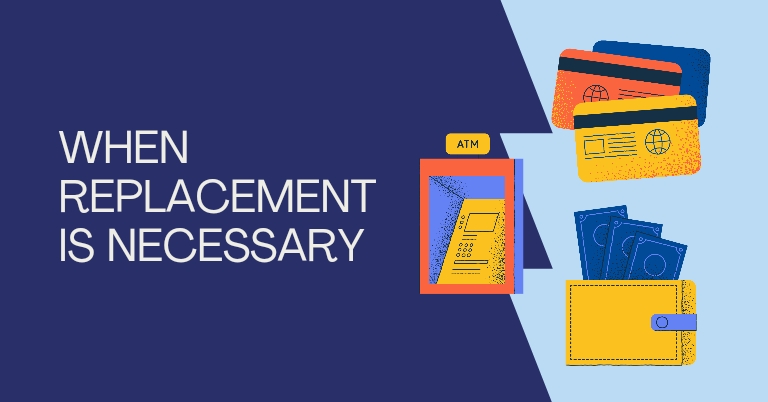We’ve all been there. You reach for your trusty cash card at checkout, ready to swipe and go, only to be met with a dreaded message: “Card Declined.” Panic sets in. Did you forget your PIN? Are you low on funds? But then you remember, you just checked your balance, and everything seemed fine. The culprit? A disabled cash card.
Don’t fret! A disabled card doesn’t necessarily mean it’s gone forever. In this comprehensive guide, we’ll delve into the top reasons your cash card might be taking a break and explore the steps you can take to get it back in action.
Common Culprits of a Disabled Cash Card
Cash cards can be disabled for a variety of reasons, some triggered by security measures and others due to user activity. Here’s a breakdown of the most frequent offenders:
Suspicious Activity: Banks and financial institutions have sophisticated fraud detection systems. If your card activity seems unusual, like a sudden surge in international transactions or a purchase from a high-risk location, your card might be temporarily disabled to protect your funds.
Expired Card: This one’s a classic. Cash cards, like all good things, have an expiration date. If yours has reached its end, it’ll be deactivated to prevent further use.
Insufficient Funds: While debit cards can go into the negative (with overdraft fees, of course), prepaid cash cards typically won’t allow transactions if the balance is zero or negative.
Security Concerns: If you reported your card lost or stolen, it’ll be disabled immediately to prevent unauthorized use.
Account Issues: Occasionally, glitches or errors within your bank’s system can lead to a temporary hold on your account, affecting your cash card functionality.
Inactivity: Some banks have policies that disable inactive accounts after a period of no use. While not as common, it’s worth keeping in mind if you haven’t used your card in a long time.
Violations of Terms and Service: Breaching your bank’s terms of service, such as engaging in illegal activities using your card, can result in account suspension and card deactivation.
Detecting the Disablement Reason
The best course of action depends on why your card is disabled. Here are some clues to help you narrow it down:
Did you recently travel or make a large purchase? Suspicious activity might be the culprit.
Did you check the expiration date on your card? An expired card is a simple fix.
Did you report your card lost or stolen? This is intentional deactivation for security reasons.
Have you used your card recently? Inactivity could be the issue.

Resolving the Cash Card Conundrum
Now that you have a better idea of why your card might be disabled, let’s explore solutions:
Contact Your Bank or Issuer: This is the most direct approach. Call your bank’s customer service line or send a secure message through their online banking platform. Explain the situation and ask for assistance reactivating your card.
Verify Your Identity: The bank representative might need to verify your identity before taking further action. Be prepared to provide your account information, Social Security number (for verification purposes only), and possibly answer some security questions.
Address Security Concerns: If suspicious activity triggered the disablement, explain any recent unusual transactions. The bank might ask you to confirm specific purchases or locations.
Update Your Information: Make sure your bank has your current contact information, including phone number and email address. This ensures they can reach you quickly if there are future security concerns.
Resolve Account Issues: If the issue stems from an account problem, the bank representative can help you resolve it and get your card reactivating.
Also Read: UNVEILING TAIPEI CAR RENTAL GHARRY
Additional Tips for a Speedy Resolution
Here are some extra pointers to expedite the process:
Gather Information: Before contacting your bank, have your account details, card number (if available), and any relevant transaction information handy.
Be Patient and Polite: Dealing with customer service can be frustrating, but staying calm and courteous will go a long way in getting your issue resolved quickly.
Follow Up: If your issue isn’t resolved immediately, don’t hesitate to follow up with your bank.
Be Mindful of Card Usage Limits
Many cash cards have daily or monthly spending limits. Be aware of these restrictions and avoid exceeding them. Transactions exceeding the limit might trigger a temporary hold on your card.
Update Your Card Information: If you get a new phone number or email address, update your bank information promptly. Outdated contact details can delay communication regarding card issues.
Enable Transaction Alerts: Many banks offer text or email alerts for transactions on your cash card. Having these alerts can help you identify suspicious activity quickly.
Consider a Virtual Card: For online transactions, consider using a virtual card linked to your cash card account. This adds an extra layer of security as the virtual card details are different from your physical card.

When Replacement is Necessary
In some cases, a replacement card might be needed. Here’s what to expect:
Replacement Fees: Banks often charge a fee for issuing a replacement card. Check your bank’s policy to see if there are any associated costs.
Delivery Time: Replacement cards typically take a few business days to arrive through mail.
Activate Your New Card: Once you receive your new card, follow the instructions provided by your bank to activate it. This usually involves logging into your online banking portal or calling customer service.
Beyond the Basics: Advanced Troubleshooting
If the basic steps don’t resolve the issue, here are some additional considerations:
Check for System Outages: Occasionally, technical glitches on the bank’s side can cause temporary card deactivation. Check your bank’s website or social media for any outage announcements.
Review Dispute Resolution Process: If you believe your card was disabled due to an error, inquire about your bank’s dispute resolution process. This might involve submitting a formal complaint and providing documentation to support your claim.
Conclusion
A disabled cash card can be a frustrating experience, but hopefully, this guide has equipped you with the knowledge to diagnose the issue and take the necessary steps to get your card back in working order. Remember, proactive account management and vigilance can help prevent future disablements. By following these tips and maintaining open communication with your bank, you can ensure your cash card remains a reliable financial tool.
Cash Card Conundrum FAQs: Answers at Your Fingertips
Even with the information above, you might still have some lingering questions. Don’t worry, this FAQ section is here to shed light on some common cash card disablement queries:
Q: Can I reactivate my disabled card online?
A: While some banks allow online card management, including temporary deactivation and reactivation, it’s not universally available. It’s best to contact your bank directly to confirm their process.
Q: How long will it take to reactivate my card?
A: The reactivation timeframe varies depending on the reason for disablement and your bank’s procedures. In most cases, it can be resolved within a single phone call. However, if further investigation is required, it might take a few business days.
Q: What if I can’t remember my PIN?
A: A forgotten PIN doesn’t necessarily disable your card, but it will prevent you from using it at ATMs or for chip-and-PIN transactions. Most banks allow you to reset your PIN online or through their mobile app. If online options aren’t available, contacting customer service is your best bet.
Q: I lost my cash card. What should I do?
A: Report your card lost or stolen immediately to prevent unauthorized use. Most banks allow you to report lost cards through their online banking platform or mobile app. You can also call customer service to report the loss and request a replacement card.
Q: Is there a difference between a disabled card and a lost/stolen card report?
A: Absolutely. A disabled card can often be reactivated, while a lost/stolen card report triggers permanent deactivation to safeguard your funds. A replacement card will be issued in the latter case.
Q: Can I still use a disabled card for online transactions?
A: It depends. If the disablement is due to suspicious online activity, further restrictions might be placed on your account, including online transactions. However, if the reason is unrelated to online use, online transactions might still be possible, depending on your bank’s policies.

Emily, an 8-year veteran, blends tech savvy with wanderlust. His fashion-forward perspective and business acumen create captivating content. Explore realms where innovation meets style.